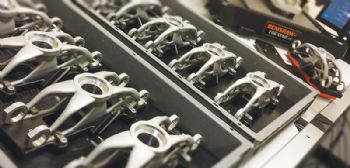
According to a survey by
Subcon 2017 (
www.subconshow.co.uk), additive manufacturing (AM) is on the verge of breaking through as a mainstream production process, with nearly a quarter of respondents saying they use AM for production components and 85% saying that they expect to do so in the next five years.
In contrast, just a year ago only 21% said they would use additive manufacturing for production components in the next five years and 35% said they might.
This trend is opening up a new market for sub-contract manufacturing services, as a third of respondents said they would use an external supplier to produce these components.
Of those companies that already have components produced by additive manufacturing, 37% use an external supplier.
Renishaw’s Marc Saunders, who was a speaker at one of the
Subcon conferences, said that AM is undergoing a revolution, as it moves from the model and tooling shop, onto the factory floor, where it is allowing firms to create innovative new products that offer better performance but could not be produced conventionally.
In his talk, Mr Saunders also considered the increased demands that series production places on AM to deliver predictable and consistent parts.
Meanwhile, Paul Adams — head of aerospace and defence at Vendigital, gave a presentation entitled ‘Additive, Brexit and Aerospace Supply Chains’.
He said: “Advancing low-cost competition is disrupting global supply chains, and investment in 3-D printing and other novel manufacturing technologies has become mission-critical for manufacturers in the aerospace and automotive sectors, but a clear investment strategy is essential.”
He spoke about how companies need to take a more strategic approach to manufacturing technology by understanding the risks associated with AM, learning how to equip supply chains to cope with faster production methods and how to bring on capability quickly and securely.